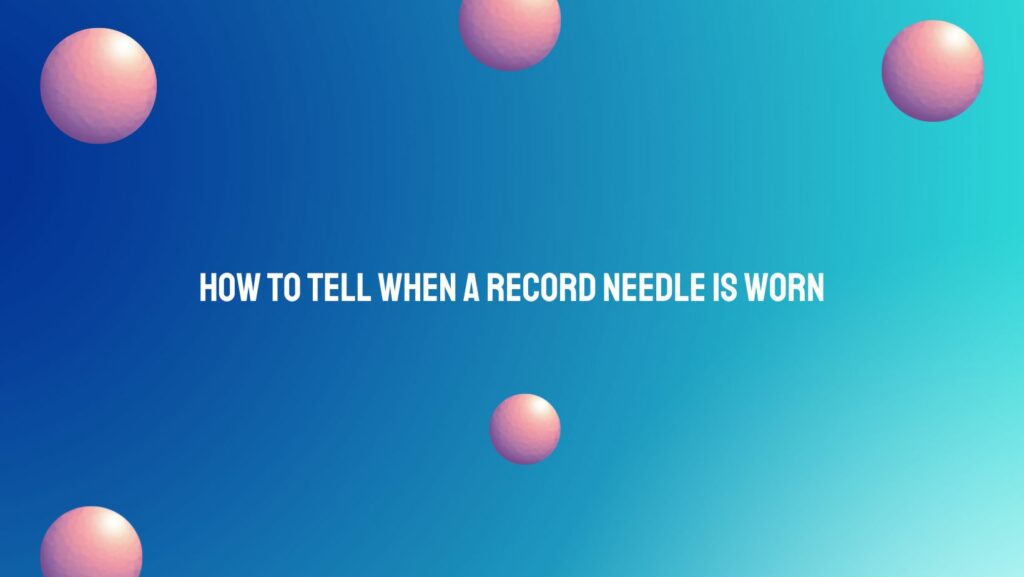As devoted vinyl enthusiasts, there’s an undeniable joy in the warm crackle and pristine tones emanating from a well-maintained record player. Yet, over time, the record needle, or stylus, experiences wear that can compromise the quality of your vinyl listening experience. In this guide, we’ll embark on a journey to uncover the telltale signs that your record needle is worn, ensuring you can address any issues and continue to enjoy the pure magic of analog audio.
- Auditory Clues:
Your ears are the first and often most perceptive detectors of a worn record needle. Listen carefully for changes in audio quality. If you notice distortions, crackling sounds, or a loss of clarity and detail, it could indicate that the needle is reaching the end of its effective life. Regularly listening to a variety of records and genres can help you discern subtle changes in sound quality.
- Increased Surface Noise:
A worn record needle may produce more surface noise than usual. If you hear an increase in pops, clicks, and other unwanted noises during playback, it’s a potential indicator that the stylus is no longer tracking the record grooves as effectively as it should.
- Skipping and Mistracking:
The stylus’s primary function is to glide smoothly along the record grooves, but a worn needle may struggle to maintain consistent contact. If you experience frequent skipping, mistracking, or the stylus lifting off the record unintentionally, it’s a strong signal that the needle requires attention.
- Visual Inspection:
A visual examination of the stylus can provide valuable insights into its condition. Use a magnifying glass and appropriate lighting to inspect the stylus tip. Look for signs of wear, such as a flattened or uneven tip. Any visible irregularities may confirm that the needle is nearing the end of its lifespan.
- Inconsistent Tracking Force:
A worn stylus may have difficulty maintaining a consistent tracking force, leading to imbalances in audio playback. Use a stylus force gauge to measure and ensure that the tracking force aligns with the manufacturer’s recommendations. Inconsistencies may signal the need for a new needle.
- Reduced High-Frequency Response:
Over time, a worn stylus may struggle to reproduce high-frequency details, resulting in a perceptible loss of sparkle and brilliance in the music. Pay attention to the high-frequency elements of your favorite tracks to gauge the stylus’s ability to accurately reproduce these nuances.
- Record and Stylus Inspection:
Regularly inspect your records for signs of stylus wear. If you notice dust, debris, or visible damage on the stylus tip, it’s a clear indication that the needle requires cleaning or replacement. Additionally, examine the records for signs of excessive wear, which can be exacerbated by a worn stylus.
Conclusion:
Becoming a sonic detective allows you to identify the signs of a worn record needle early on, preserving both your stylus and your cherished vinyl collection. By combining auditory clues, visual inspections, and careful monitoring of your record player’s performance, you can ensure that your stylus remains in optimal condition, delivering the authentic and rich sound that vinyl enthusiasts hold dear. Embrace the role of vigilant listener and caretaker of your analog treasures, and your vinyl journey will continue to be a harmonious and delightful experience.


